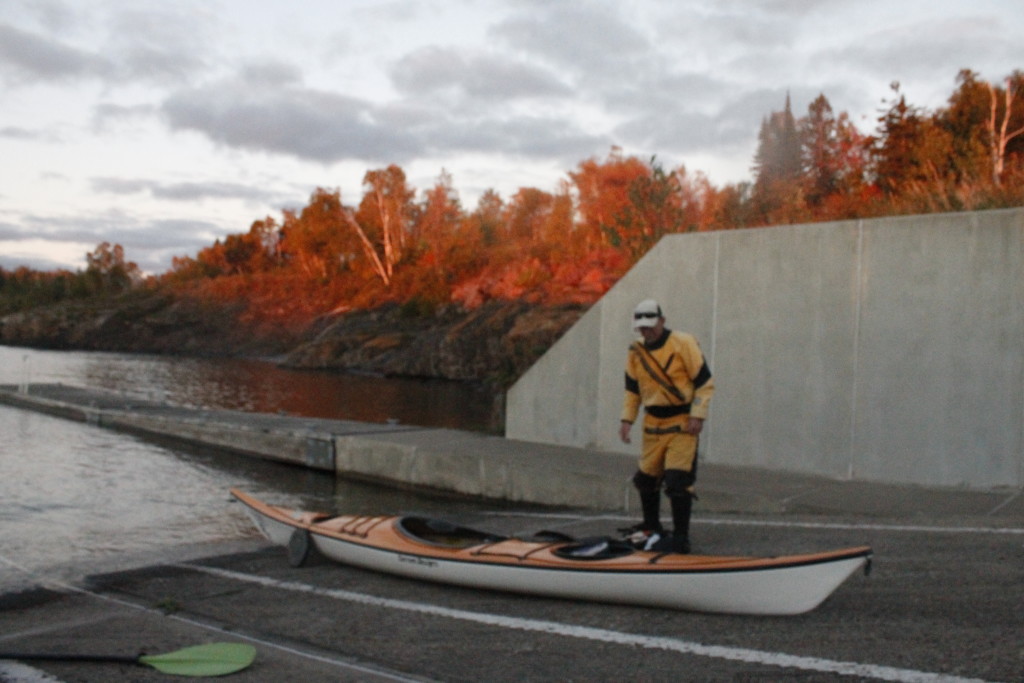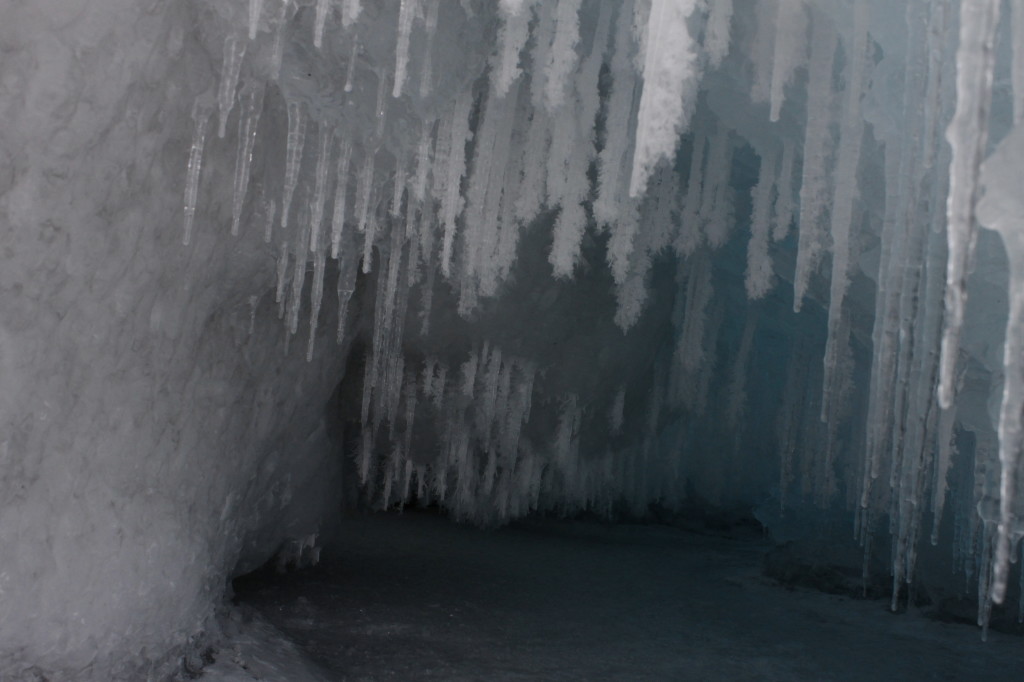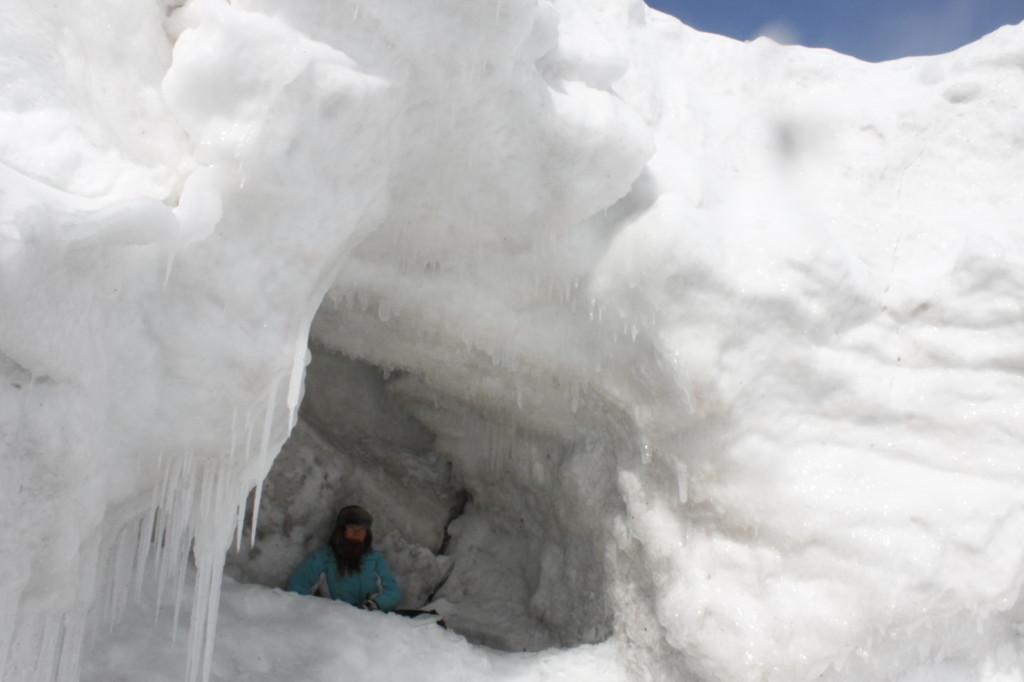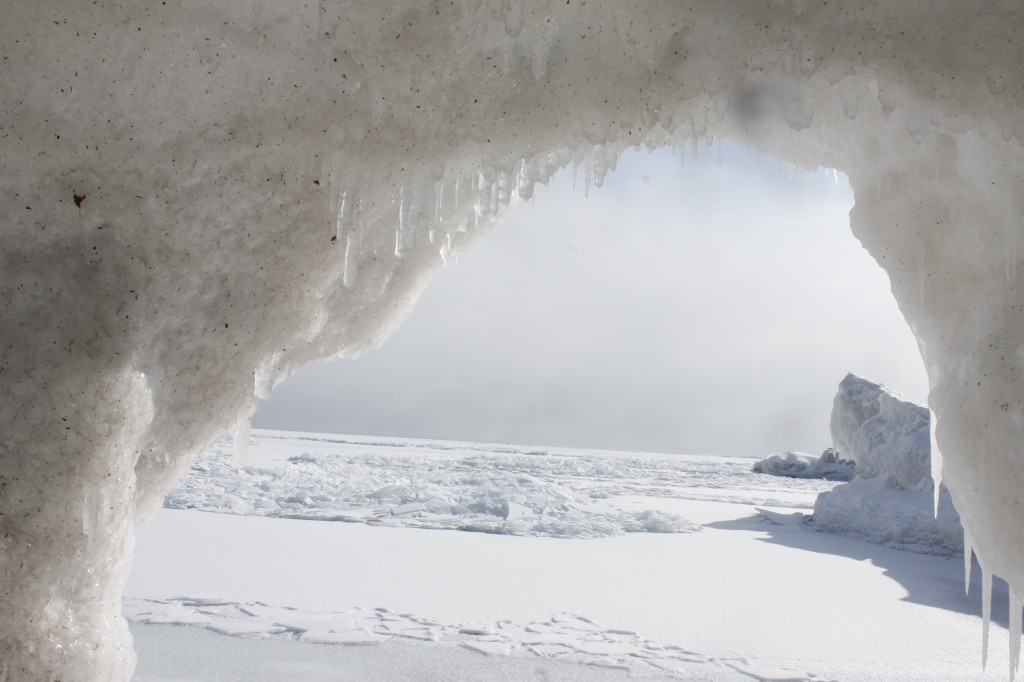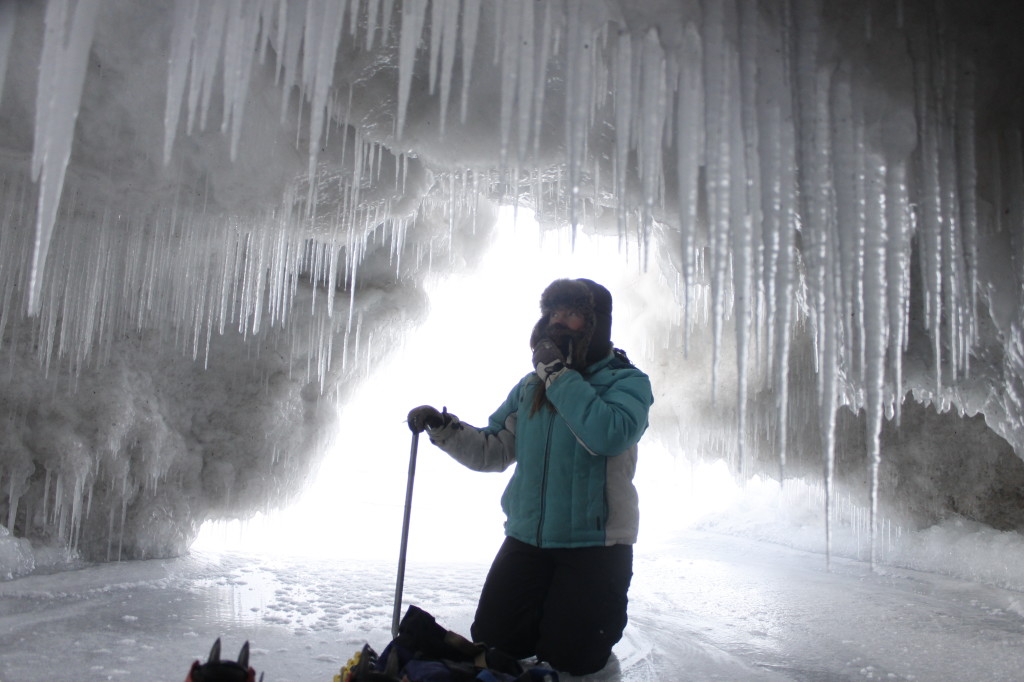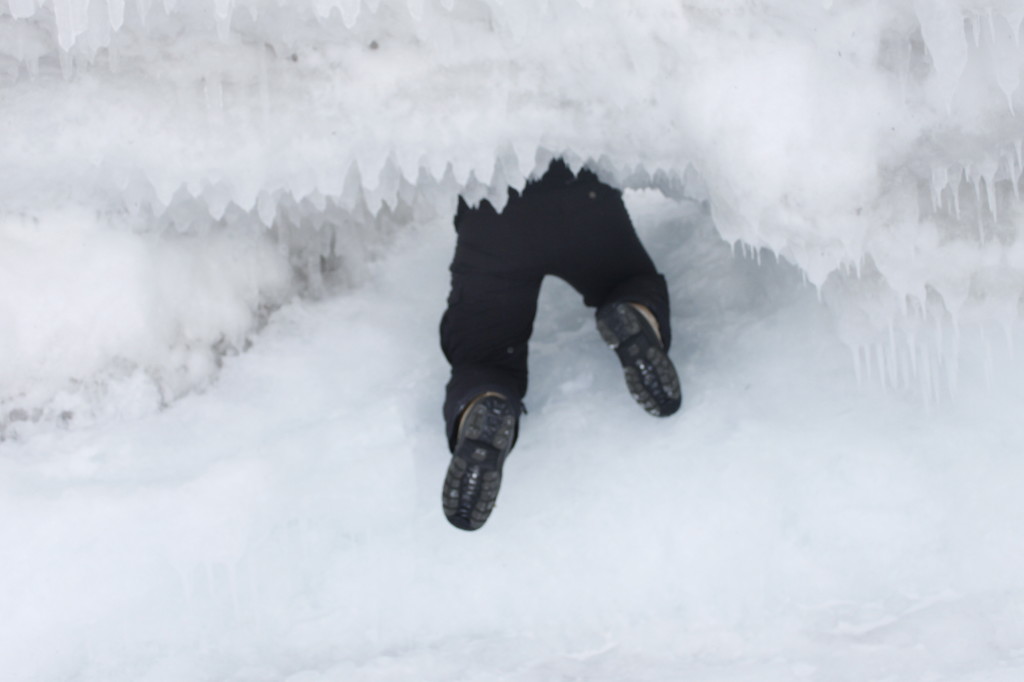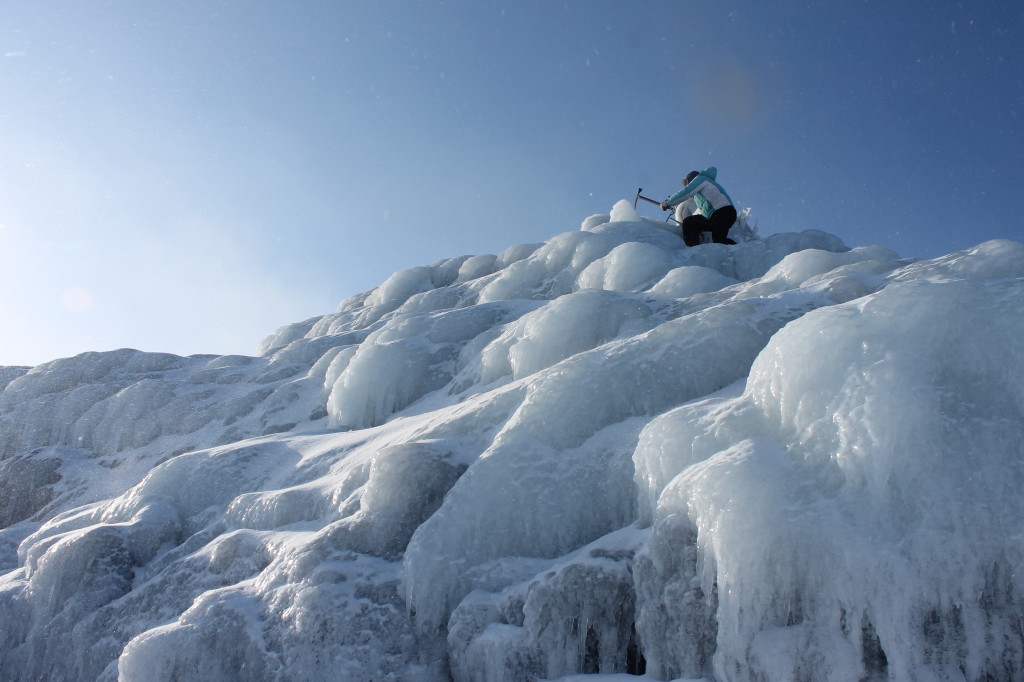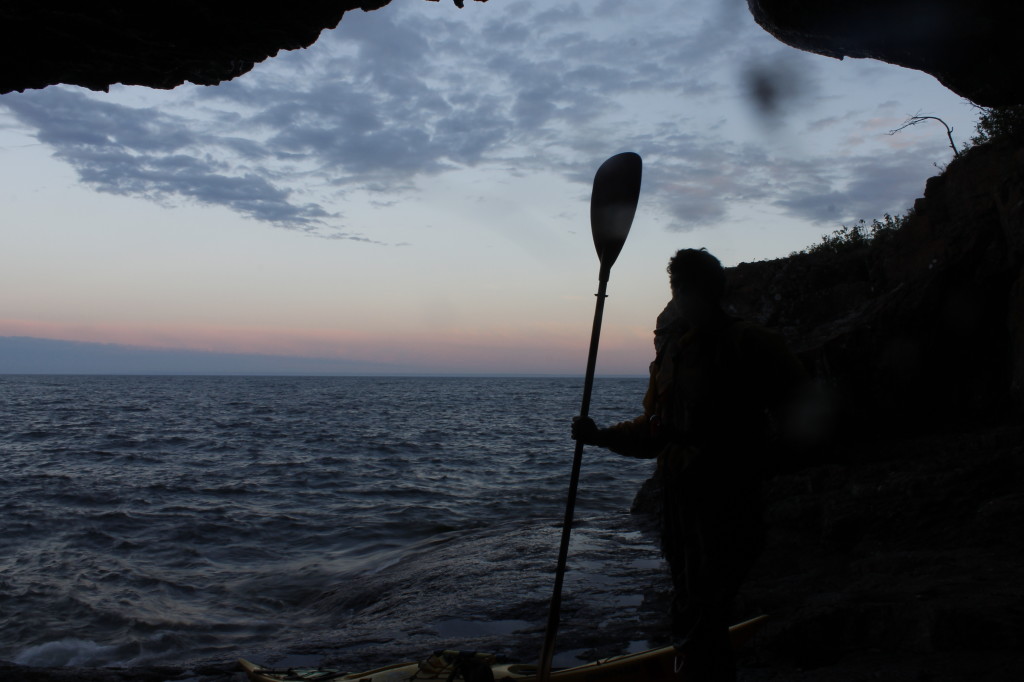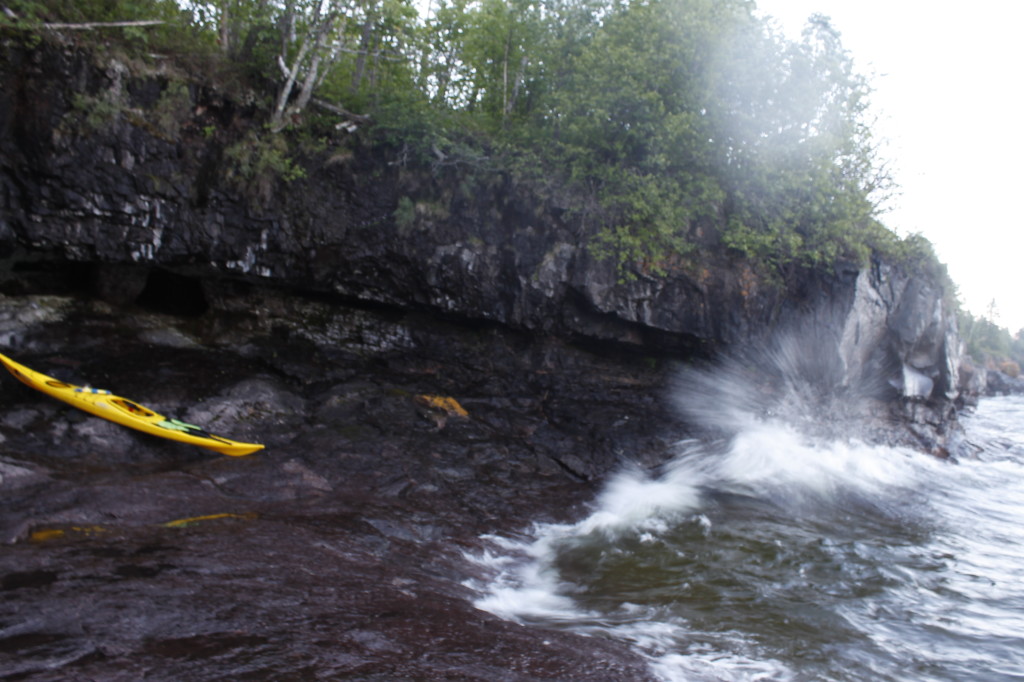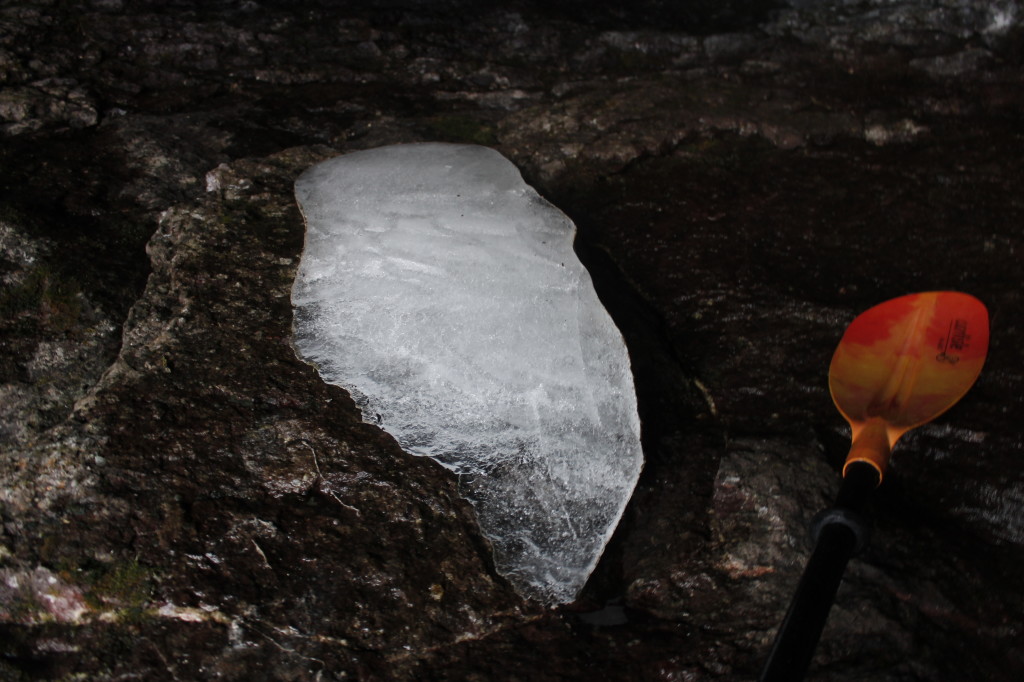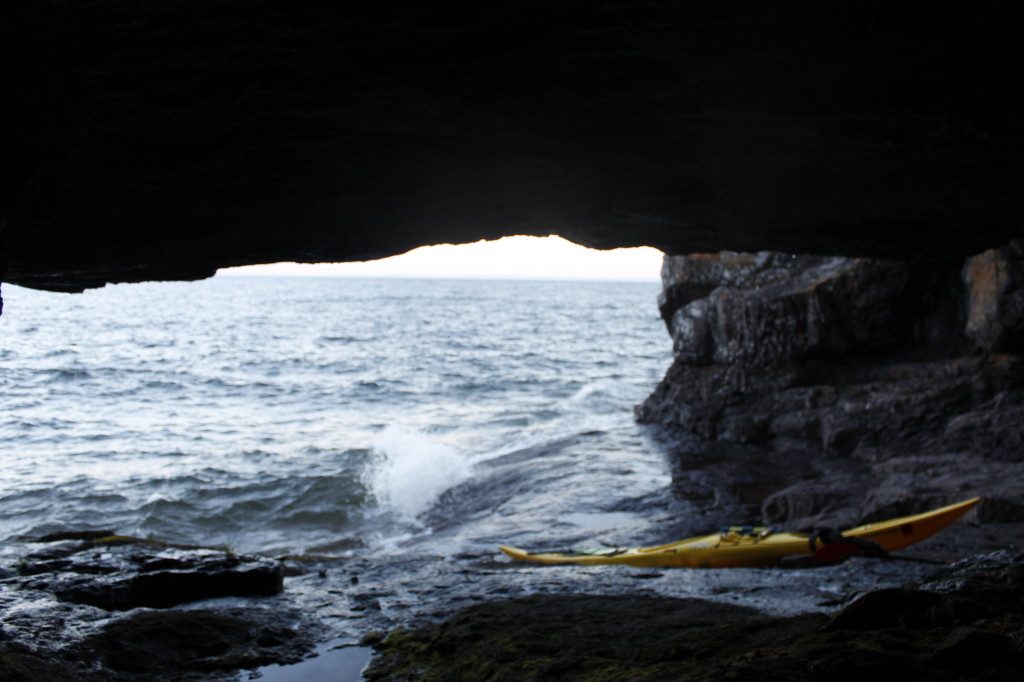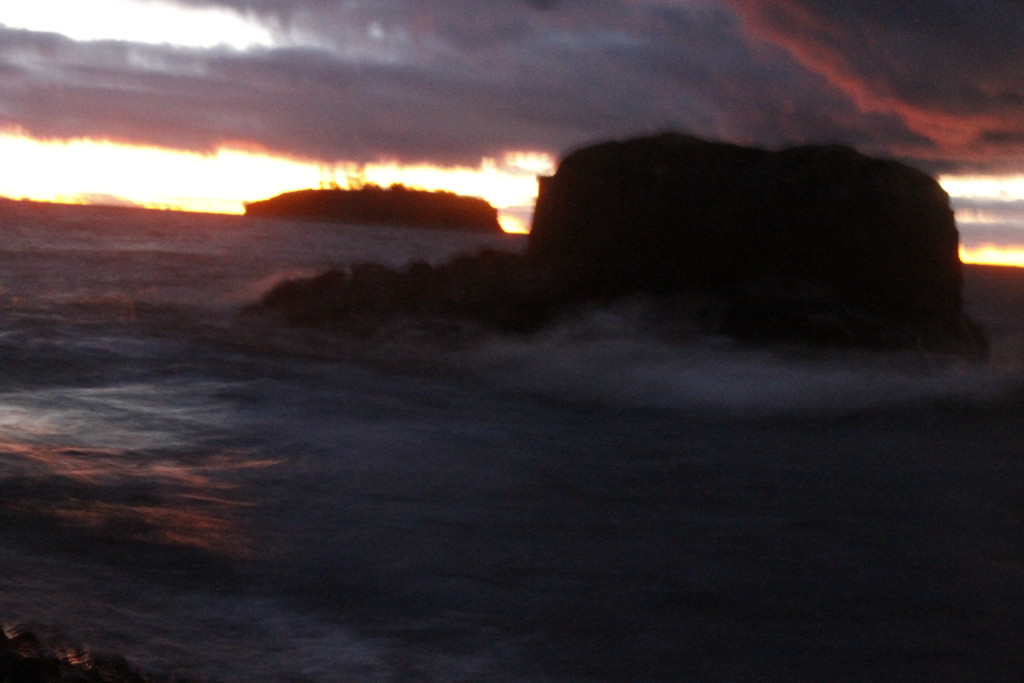
The second half of my big wave kayak adventure on Lake Superior:
The rising seas sent waves crashing into sea caves, mortar rounds of spray flying out from the cliffs.
A large stone archway guarded the entrance to a recess in the cliffs. I watched the waves slam against the sides, thought about what it would be like to rag-doll against the walls. I wouldn’t try to go through this one.
The Manitou River fell from the cliffs in a frothing yellow fury. The upper falls slammed into the side of the canyon, whereupon the onslaught redirected into a second, even more spectacular drop. There was a zone of smooth water in front of the falls, where the river flow was strong enough to beat back the lake, Further, the water boiled. Lake swells rose higher yet as they crashed and exploded into the face of the current. Birch leaves whirled in the agitation, flashing in and out of the darkness like strange fish.
It was an extremely tempting, if terrifying, place to try and surf a kayak.
The way to do it, was to aim for an eddy behind a sunken gravel bar. It was a spot that was slightly smaller than a modest kitchen, where the water was almost completely calm, a demilitarized zone between the warring lake and river.
I struggled to set up a good approach, wrestling with the river continually trying to push me back and the waves breaking at my stern. I half-surfed a couple waves, stopping to avoid getting thrown sideways or pushed down into the river. After a long struggle, I caught a wave that pushed me over the gravel bar and into the calm place.
It was one of the strangest places I have ever sat in a kayak.
Looking straight up, I could see 100-foot walls, curved amphitheater-like above my head. The falls couldn’t have been more than two kayak-lengths aways. And then there were the rollers coming in, crashing through the arch to the left.
I finally had the luxury of giving the view my complete attention, with no worries about the next breaking wave.
After I punched the kayak back through the breakers, Dave and I continued along the cliffs.
Mercifully, the profile of the North Shore has many projecting points, which create shelter zones where there will be calm water.
Fenstad’s Resort had one such protective point. We took a tranquil beach landing.
We were making great time down the shore with the waves pushing us, and even with the gathering seas, neither of us wanted to hurry.
“The point of a journey is not to arrive,” Dave said.
I nodded. The bigger waves? Let them come! Hopefully, they wouldn’t.
A guy with a mirrorless camera walked up to us to chat. There was some couple he’d heard about, who got swept out into the lake by an offshore wind and couldn’t get back. They died of hypothermia. We told him, we were experienced kayakers, guides actually, and that we’d paddled in these kind of conditions before. That seemed good enough for him, and we ended up talking about wildlife sightings in the area.
It turns out that there was a bear cub in a tree nearby, no mom. She had probably been shot by hunters. leaving the little guy to fend for itself this winter. The cub was probably a yearling, the guy thought, not a good prospect for survival.
The bear had been stuffing itself with apples from the resort’s trees, but the guy left it a fish he had caught so the growing youngster could experience some other sections on the food pyramid.
When the three of us went to see the bear, we found it looking down at us from a tall spruce. After more people went to look at him, he climbed higher and to the other side of the trunk. Then and again, he would peep out to look at us.
There were bright red apples hanging off of one tree, greens on another. They were delicious.
Trout swirled about in two streams nearby. The water levels had come down, leaving them trapped in pools.
Dave thought he might snatch one and leave it for the bear cub.. The guide and I watched skeptically as he waded in, but when he started throwing stones in strategic places, he managed to herd them into one place. Dave might have tried to swipe one out of the water, then thought better of it.
The waves kept building, but weren’t quite at the point where we wouldn’t fool around.
We deliberately took on a couple surf spots above the ledges, usually, opting to get near the downwind side of the ledge to make it easier to steer out of there if we encountered something too big to handle.
At one point, I’d thought I’d missed a wave, only to have the lake drop out from under me. Suddenly, I was surfing sideways, paddle jammed in the water. The stabilizing maneuver, known as the high brace, reminds me of 19th century whaling. I jab the paddle blade at the oncoming beast, lean the boat in and stick it. A Melville quote would have been appropriate here.
“From Hell’s heart, I stab at thee!”
This particular breaker took me on a 30-foot sleigh ride before I swung out of the break zone.
At another point, we were kayaking near shore, when a huge wave suddenly reared up next to me.
“I’d hate to be you right now,” Dave called.
But the wave ended up grabbing him too.
We stuck our paddles and rode, until the wave threw us up on a cobble beach. Dave might have been pissed because his fiberglass kayak had just taken a beating, but he laughed.
“That. Was. Awesome!”
The waves kept building.
After another hour on the water, we didn’t fool around much.
Every now and then, a 10-footer would rear up by our kayaks. I would try to angle my boat halfway into them, leaving room to brace and avoid getting flipped over backwards. Most terrifying of all were those monster waves, that broke at the top (but didn’t roll completely over, thank God.) These waves made their own break zones. I found that these half-breakers were technically easier to ride out than the breakers on shore or those that went over a shallow ledge. They just happened to be scarier than hell. If these massive waves started rolling over all the way, I couldn’t imagine how I could stay upright paddling through them.
The northeasterly swells kept me looking over my left shoulder constantly, with little time to appreciate some of the rock formations on shore.
This was a shame because we were going past Tettegouche State Park, home to a massive sea cave near Shovel Point.
I glanced at the formation with some regret. There was no way we would kayak into the cave now with this crazy surf.
Instead, we focused on getting around the cliffs at Shovel Point. Spectators at the rail got to see us taking on the swells and reflector waves.
The waves beyond the point were smaller, if still powerful, giving Dave and I some long-distance surfs.
Then we decided to take a shortcut through a small boulder garden. This turned out to be a mistake for me, when a wave crashed early and threw my boat against a rock. I steered away from the obstacle, only to get thrown up against yet another. I was almost out of danger when a third wave, hit me and flipped the front of my boat on top of a boulder.
Shit.
I tried to flip, back over, but the boulder got in the way of my paddle. Next, I tried pushing off the boulder itself, but I had to take my hand out from the pogies to do this. Just as I was ready to right the kayak, a mother of a wave came and blasted me, ejecting me out of the boat through the spray skirt.
Getting the boat emptied out on the rocks took at least 10 minutes. Submersion in the cold water brought up an urgent need to pee, which I did as discretely as possible (not very discretely) in front of the bystanders watching from the cliffs.
Dave came around and helped me get the last of the water out of the filled-up boat and get me back in. We were determined to get off the lake via the Baptism River, which meant that we would have to surf waves in against the current. The river shot out in an offset angle from between a cobble bar and a rock cliff.
The big-ass waves were crashing everywhere now. I let Dave go into the river first, slowly side-surfing one wave at a time in order to hit the sweet spot. When he got into the slack water, I brought my boat to bear.
The stern lifted on the crest of a huge breaker. As I plunged the paddle in, the wave shot the boat to a wild left and bounced its nose off the cliff. I back paddled on the right.
Here came the second breaker.
Again, I stabbed the paddle into my assailant. This time, the shaft snapped.
Of course, the wave pushed me back into the cliff, and I had to shove off with my left arm.
I held both ends of the busted paddle and paddled them like mad for the river mouth. Fighting the current this way gave me just enough momentum to stay ahead of the break zone, but it was like running top speed up a tilted treadmill. I wasn’t going any further forward and eventually, I knew the current would feed the boat back to the carnage.
Dave had already beached his kayak and jumped in the belly-deep current. He grabbed the loop on the nose of my kayak and got me the rest of the way home. Saved my ass.
We threw our kayaks up on the beach, where there was a corridor of rock piles and some inexplicably well-dressed people milling about. Some of them started asking to Dave about our journey. I stumbled into the shelter of some ledges where I could be out of the wind.
It was around this time that I realized that I was dumb to keep flailing at the water with two ends of the broken paddle. If I had just taken one end and paddled with it canoe-style I probably would have gotten enough momentum to go up current and get onto the beach on my own.
Some of the well dressed contingent came over to spread the cheer.
“We saw you almost die,”
“We didn’t almost die,” Dave said.
“Well, can you please move your boats, we’re going to have a ceremony here.”
A wedding!
And if we had come in ten minutes later, well, both of us would have absolutely surfed right into the marriage ceremony. What? You didn’t get the RSVP? Sorry guys, but these boats are coming in.
I can understand why many of those on shore, might have seen this all go down and thought, ‘Wow. What a couple of idiots to be out in that.’ Maybe some readers feel that way.
I do take issue with people who make rote judgements of how dangerous/safe, something I am doing is is based on a cursory, emotional assessment.
I’ve had people approach me after I get off the water with this automatically superior attitude. They don’t necessarily say, “You’re dumb.” Usually, they relate some passive-aggressive story about somebody who died. Not that it matters that the other guy had no life jacket, no wetsuit and several drinks in the tank. Never mind that I practice kayak rescues, practice rolling, practice bracing and practice in big waves. I constantly ask myself if I am allowing my enthusiasm to cloud judgement.
I’ve also been that guy on the beach. I’ve told a group in a canoe that the waves were going to be much bigger when they got around the point and tried to discourage them from going out on the 40-degree waters in jeans and cotton shirts.
Still, these others, just by knowing that someone has died on the lake, have gained this incredible perspective that I must lack. Thank you, Concerned Bystander, for your considered opinion.
While I don’t always make great decisions, I do resent others lumping me with the yahoos who have no idea what they are doing.
Dave and I used some judgement when we looked back out at the lake and saw mostly big breakers going out to Palisade Head. We had four miles of lake to cover to get back to my car. Could we make it? I thought we could do it if we had to.
But maybe we shouldn’t. Constant bracing had taken a toll on Dave’s back. I was feeling tightness as well. The lake showed every indication that the waves would continue to build.
Dave took out a cell phone and called a friend to pick us up. We hauled the boats up the long steps away from the lake.
The waves stayed rolling in my head for two nights in a row. I felt that I was moving with the swells, bracing into waves, surfing them. Some kind of unconscious learning was happening. Surely, the neurons were making new connections, preparing me for the next trip on the big water.
Here was the trip I will remember years from now: two kayaks, beneath the cliffs, through the waves, staying up.

